Osaka is a constant assault on the senses, an impression which is cemented after just a few hours of being in Japan’s third biggest city. The Shinsekai quarter in the south of the city, for example, is filled with shops and restaurants covered in colourful neon signs, Japanese calligraphy, manga characters and comic book heroes. You get lured in by the smell of food; it smells of a bewildering variety of dishes, advertised by the people standing in front of the restaurants.
Only a visit to Tower Knives brings some peace and quiet. This specialist shop for hand-crafted knives with blades that are as hard as they are sharp is named after the neighbourhood’s landmark, the Tsutenkaku tower. As the Canadian owner Bjorn Heiberg explains, people from all over the world visit his store. The quality of Japanese knives is unrivalled – and when it comes to prepping food, every cut needs to be perfect. But more on that later.
When Shinsekai was given the function of a nightlife and entertainment district during the expansion of the city in 1912, the first version of the tower was a hybrid of the Arc de Triomphe and the Eiffel Tower. It was of dubious aesthetic value and was replaced in 1956. Since then, at 103 metres in height, the eight-sided structure has been the centrepiece of the district.
Artificial islands
On a clear day, you can make out the outlines of the artificial islands in Osaka Bay from the Tsutenkaku tower’s observation deck. It’s home to the city’s port facilities, a number of theme parks and now Expo 2025, which is taking place on the island of Yumeshima.
However, you find yourself looking in vain for historical architecture. As in many cities in Japan, older buildings were replaced by new earthquake-proof constructions. This is also the case in the neighbouring Nipponbashi Denden Town. The district is entirely dedicated to shopping and entertainment, like the famous Akihabara neighbourhood in Tokyo.
Brightly flashing electronics stores alternate with shops selling manga and collectibles. Above street level, the facades of the buildings are covered with larger-than-life robots or Japanese TV stars. Hundreds of unique vending machines keep things from getting boring, selling items such as freshly squeezed juice, hot sauce and soft drinks.
Food for gourmets and the brave
Osaka has a population of 2.8 million, while the metropolitan area, which includes the neighbouring cities of Kyoto and Kobe, has a population of around 19.3 million. This makes it one of the most populous urban regions in the world.
A significant portion of these residents seems to spend a lot of their time in the Namba district, which also confirms the suspicion that Osakans love their food. The Michelin Guide lists over 200 restaurants, more than 70 of which have been awarded at least one star. Known as the kitchen of Japan, Osaka is considered the nation’s culinary capital.
The ultimate proof of this love for food is the Kuromon Ichiba Market. In a narrow alleyway, you’ll find almost 600 metres of everything Japanese cuisine is known for piled high: freshly fried tempura, artistically arranged sushi, mountains of grilled skewered chicken (yakitori) and seafood from king crab to sea urchin.
And then there’s the takoyaki. These fried or grilled balls are typically filled with octopus and are Osaka’s signature snack. In short: the market is a street food paradise with 160 stands, all at reasonable prices.
Adventurous eaters head to the Minami Fish Store. This unassuming corner stand specialises in a delicacy that’s avoided outside of Japan: fugu (pufferfish) sashimi, which if improperly prepared will result in food poisoning and can lead to death.
It’s an example of where locally produced knives that can make precise cuts come in handy. As chef Gaku Imagawa from the restaurant Utsubohommachi Gaku explains, you need a license to prepare fugu. “Since this requirement, there have hardly been any incidents.”
Osaka Castle is an urban oasis
Osaka can sometimes be rather intense and over-the-top, but it’s also tidy and has a calmer side. You won’t see much rubbish on the streets or aggressive drivers. A well-known haven in the north-east of the city makes you relaxed just by thinking about it: Osaka Castle.
The 55-metre-high structure, covering an area of around one square metre, is surrounded by two moats and imposing walls. Completed in 1583, the predominantly wooden building has been repeatedly destroyed and rebuilt.
With its intricate roof and immaculate white walls, the castle keeps alive memories of the mysterious Japan of centuries past. Reconstructed using concrete, the castle has been home to a museum since 1997. There are no flashing neon signs or street food stands here. The only stimuli for the senses are some prayer shrines and a sprawling park with cherry and plum trees.
Giant crab and giant athlete
We continue to Dotonbori, a district known for its entertainment and large illuminated billboards, including a giant crab with moving legs and spider-man perching on a clam. There are also billboards for Expo 2025, which is taking place from April to September.
The star of Dotonbori, however, is the Glico Man. The neon sign depicting a giant athlete has been a symbol of Glico candy since 1935. Today, it primarily serves as a backdrop for selfies, which regularly results in pedestrian traffic jams along the Dotonbori Canal and the nearby Ebisu Bridge.
Dotonbori also has a more relaxing side. Tour boats cruise leisurely along the canal, offering a new perspective on the hustle and bustle at street level. You go past the Ebisu Tower, the world’s first oval ferris wheel, which reaches a height of 77 metres.
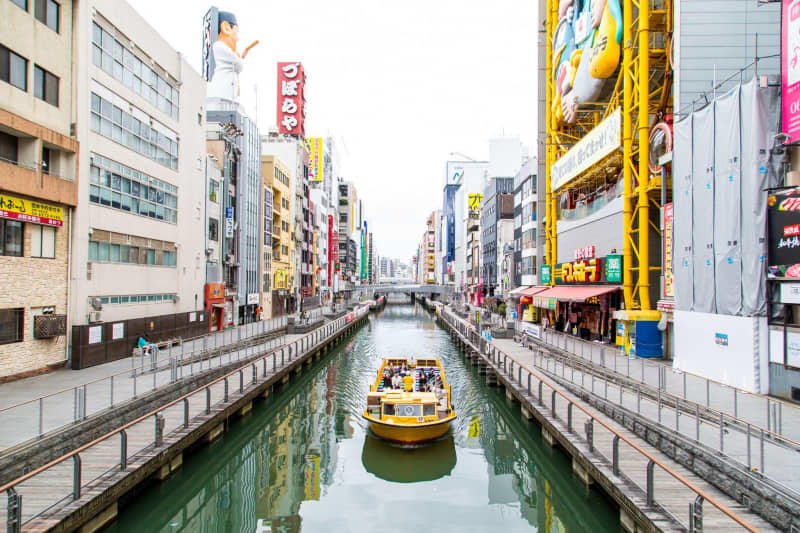
If you want to explore Dotonbori from a more tranquil side, take a trip on one of the excursion boats on the canal. Osaka Convention & Tourism Bureau/dpa

Sea urchins at a market in Osaka. Ralf Johnen/dpa
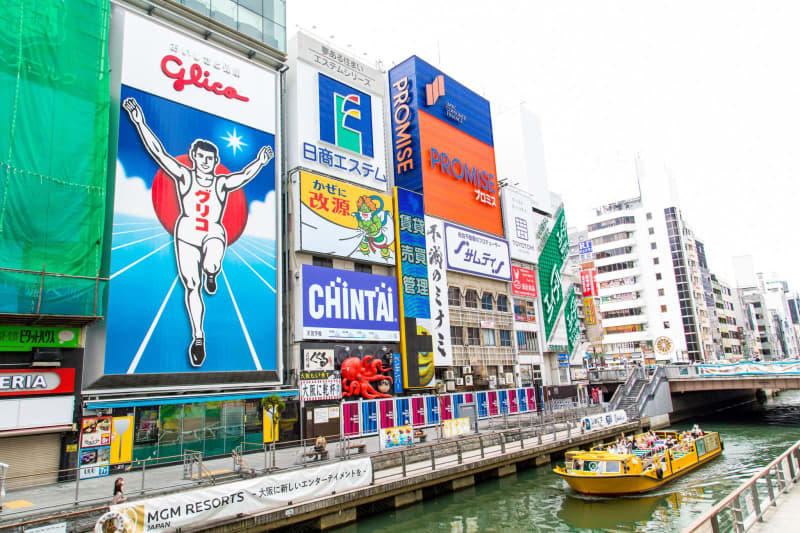
Glico Man, an iconic set of neon signs near the Ebisu Bridge, is Osaka’s answer to Tokyo’s Ginza ad-packed shopping district. Osaka Convention & Tourism Bureau/dpa

Osaka’s tree-lined Yodo River is stunning during the cherry blossom season. Osaka Convention & Tourism Bureau/dpa
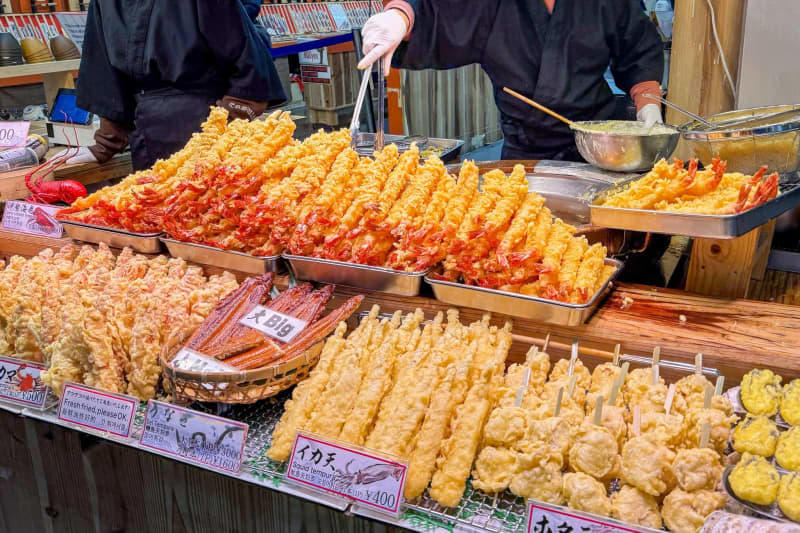
Street food at the Kuromon Ichiba Market in Osaka. Ralf Johnen/dpa

Spiderman crawling into a scallop shell is just one of many façade decorations in Dotonbori. Ralf Johnen/dpa
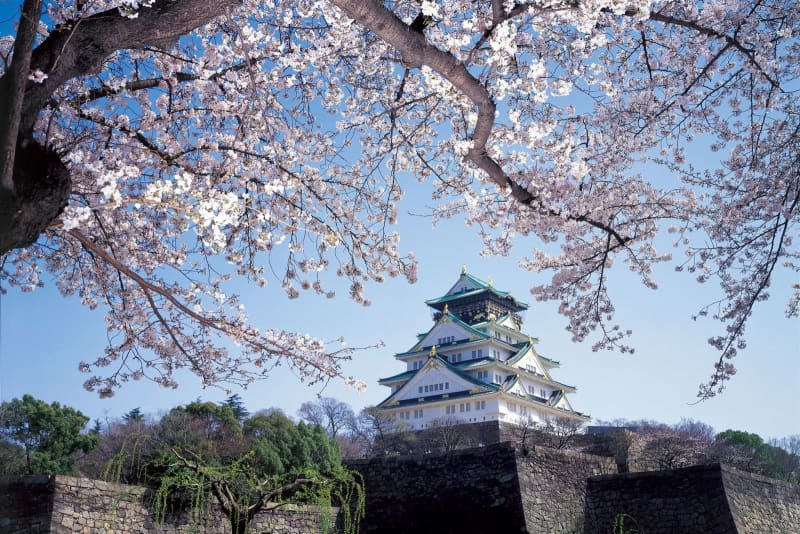
Surrounded by a park, Osaka Castle is a peaceful spot for those who want to escape the hustle and bustle of the city centre. Osaka Convention & Tourism Bureau/dpa
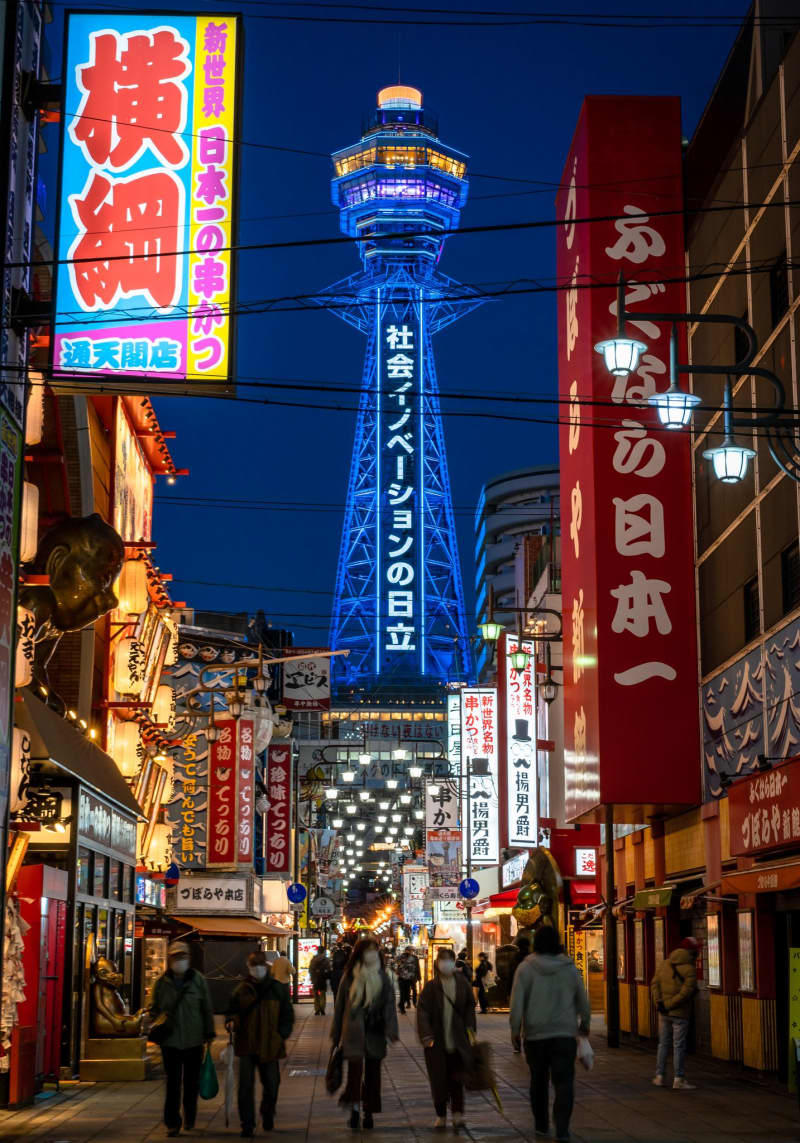
The biggest landmark of the Shinsekai neighbourhood is the Tsutenkaku Tower. Osaka Convention & Tourism Bureau/dpa
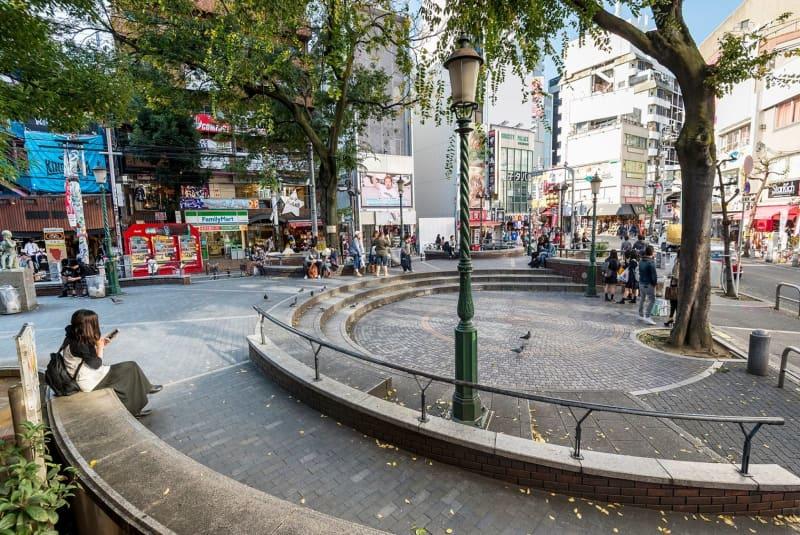
Osaka’s hipsters stock up on vintage clothing around Sankaku Park. Osaka Convention & Tourism Bureau/dpa

The world’s first oval Ferris wheel, the Ebisu Tower takes you to a height of 77 metres. Osaka Convention & Tourism Bureau/dpa


AloJapan.com